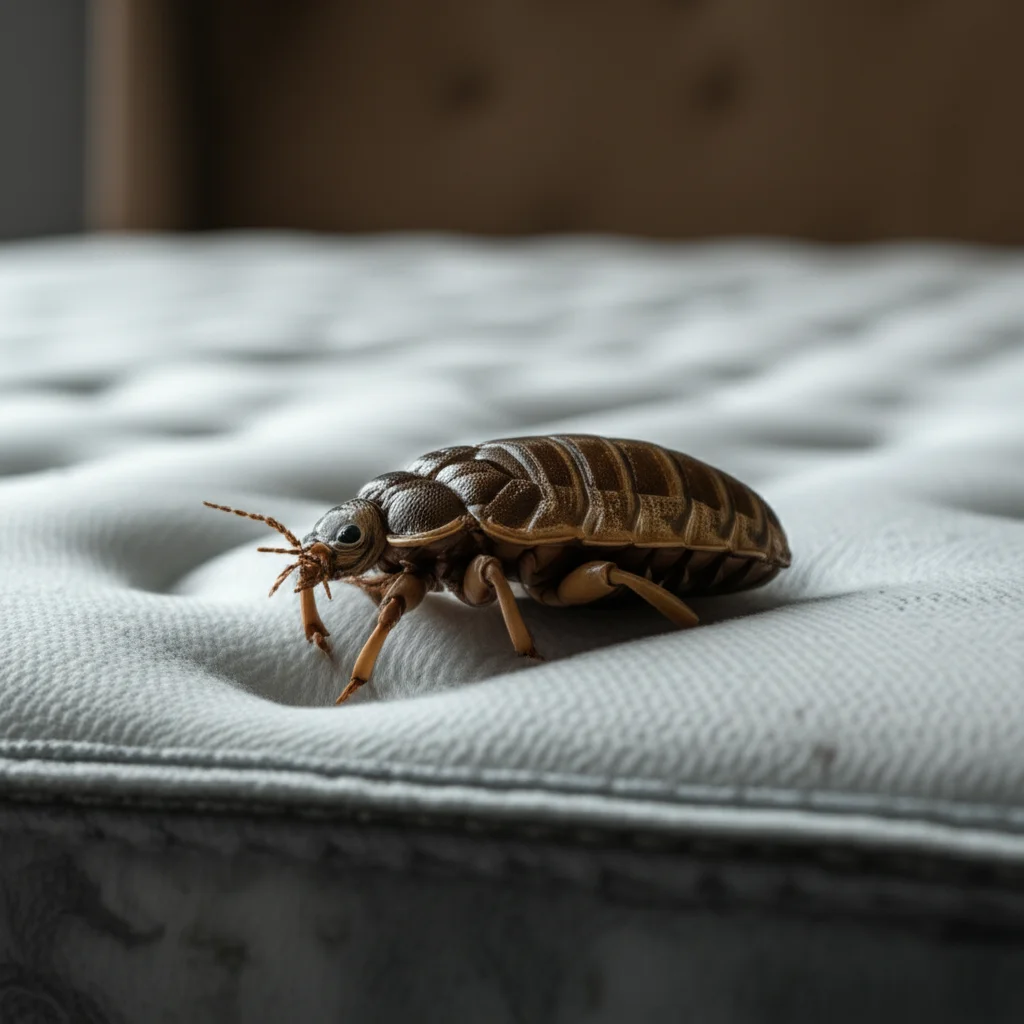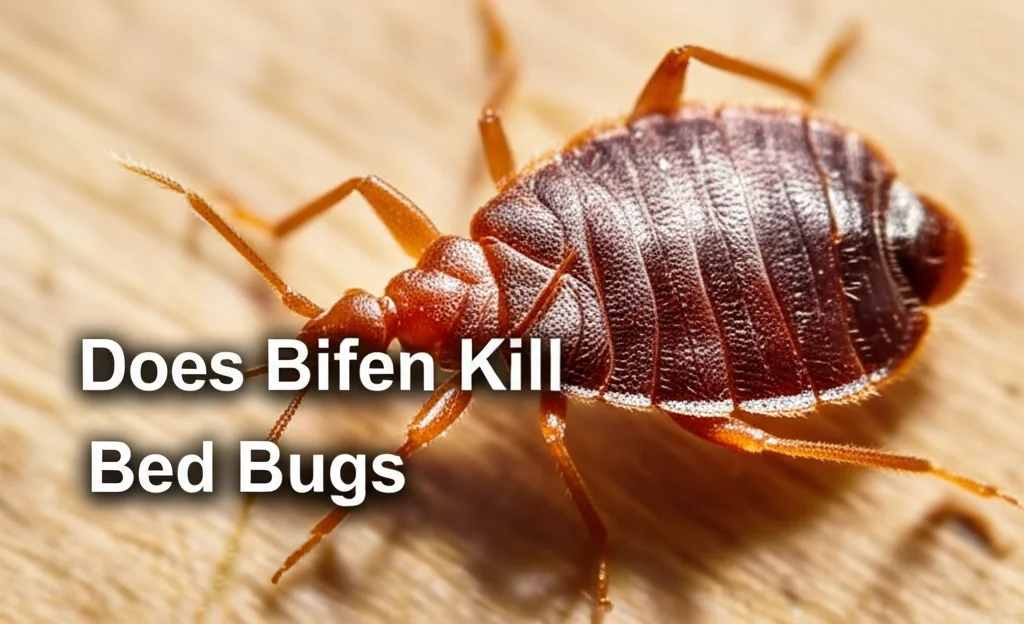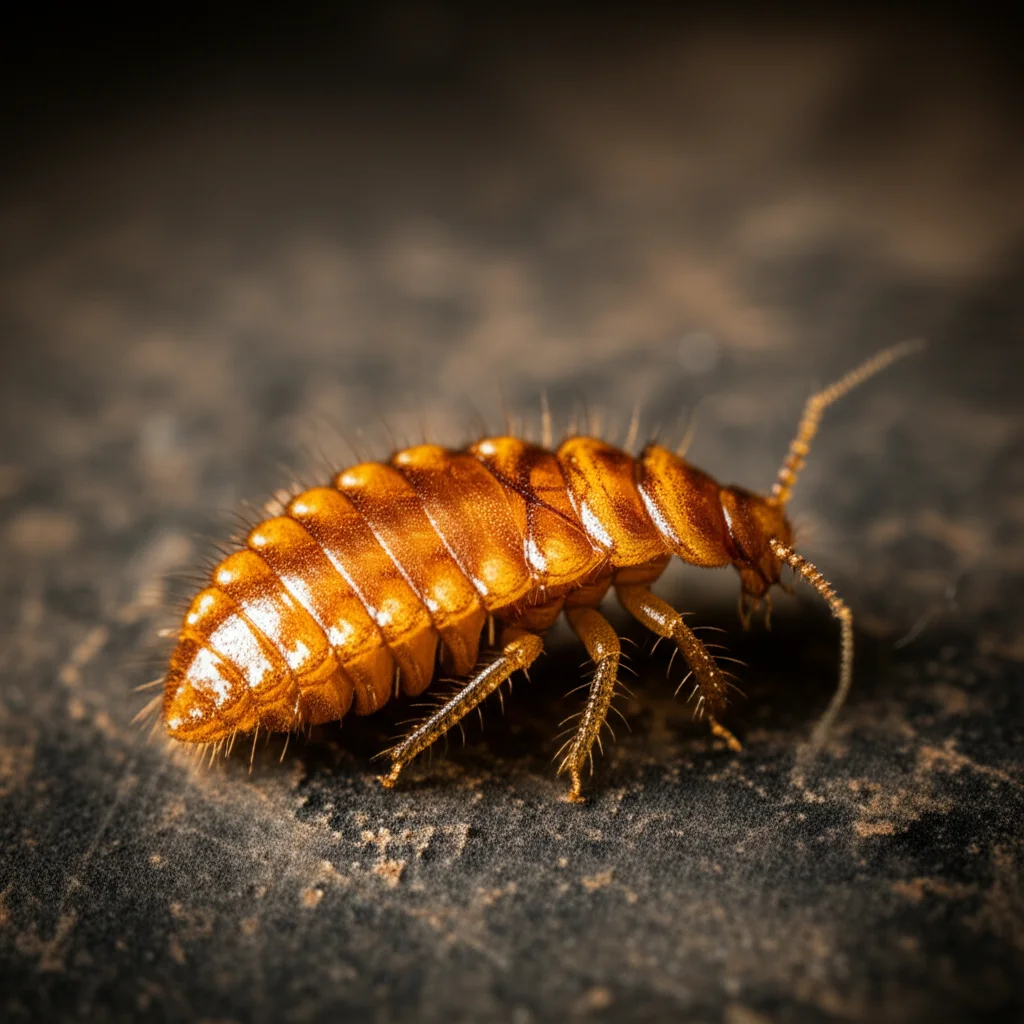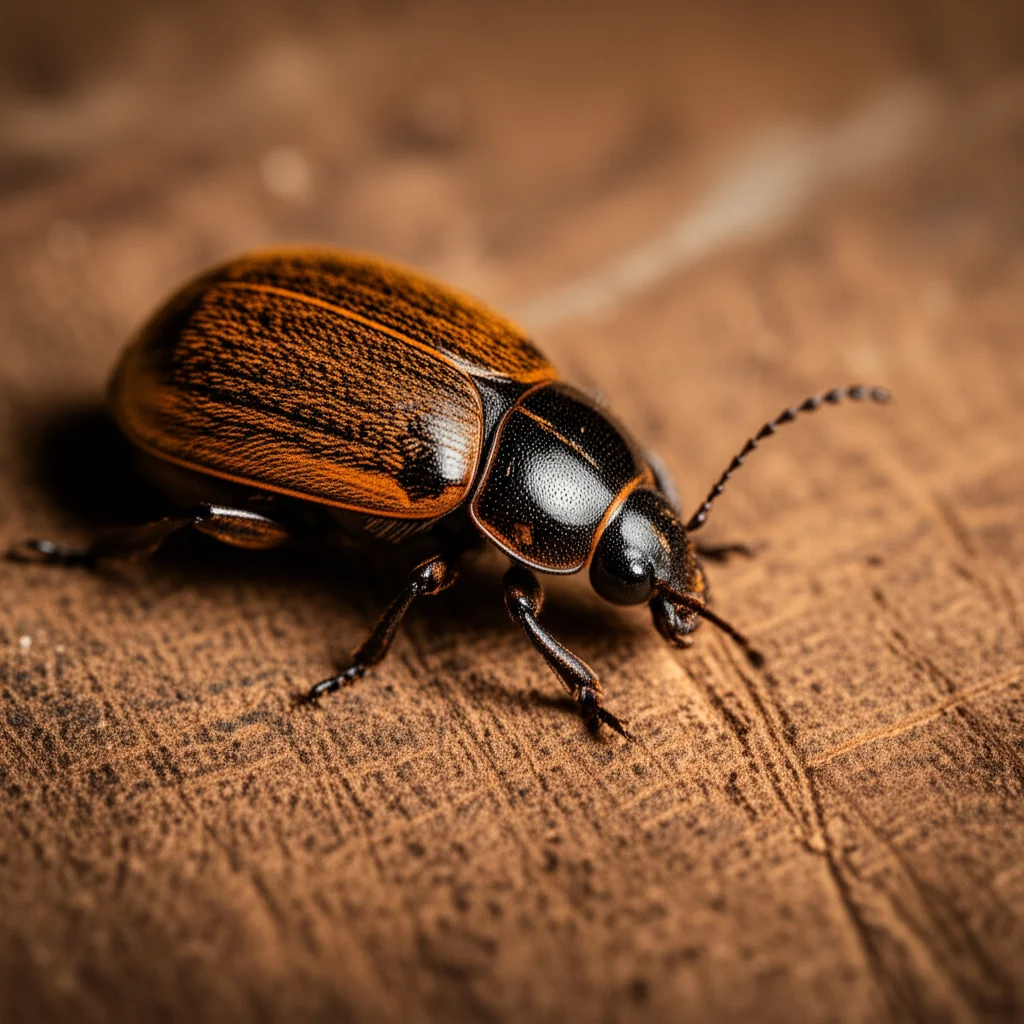· Katria Melrose · Pest Control · 19 min read
How To Treat Air Mattress For Bed Bugs

Effectively Treat Your Air Mattress for Bed Bugs
Waking up with itchy bites can be a truly disturbing experience. When you suspect bed bugs are in your sleeping space, panic can set in quickly. An air mattress, often seen as a temporary or less susceptible sleeping surface, can indeed harbor these tiny pests. Learning how to treat air mattress for bed bugs is crucial for restoring peace to your home. This guide helps you identify, eliminate, and prevent future infestations. We will walk through clear steps to get rid of bed bugs from your air mattress and keep them away.
Takeaway
Treating an air mattress for bed bugs requires immediate action and thorough cleaning.
- First, confirm bed bugs are present. Look for small red stains, tiny black spots, or the bugs themselves.
- Next, prepare your sleeping area by stripping all bedding and washing it on high heat.
- Then, use a vacuum cleaner with a hose attachment to meticulously clean the air mattress. Pay attention to seams and crevices.
- Consider using steam treatment or a bed bug-specific insecticide for full eradication.
- Finally, implement preventive measures like mattress encasements and regular inspections.
Clear Answer to the Main Query
To treat an air mattress for bed bugs, first verify their presence through signs like tiny spots or actual bugs. Then, thoroughly vacuum the entire mattress, paying close attention to seams. Follow this by using a steamer or a bed bug-specific spray, applying treatment to all folds and crevices. Always ensure the mattress is dry before re-inflating.
Understanding Bed Bugs on Air Mattresses
Bed bugs are small, reddish-brown insects. They feed on the blood of humans and animals. These pests are excellent at hiding. People often think bed bugs only live in traditional mattresses. However, an air mattress provides many hiding spots for them too. They can hide in seams, valves, and even inside the pump mechanism.
Bed bugs are not a sign of uncleanliness. They can hitchhike on luggage, used furniture, or even clothing. Once they enter your home, they look for dark, secluded places. Your air mattress offers these perfect conditions. They come out at night to feed. During the day, they hide close to their host. This proximity makes detection challenging.
Understanding their behavior helps in effective treatment. Bed bugs can survive for months without a blood meal. This means a simple cleaning may not be enough. You need to target their eggs and nymphs too. The material of an air mattress, often PVC or vinyl, does not absorb liquids like fabric mattresses. This changes the approach for treatment. Knowing where they hide and how long they live helps you plan a better attack.
Confirming Bed Bug Infestation on Your Air Mattress
Before you start any treatment, you must confirm you have bed bugs. Other pests can cause similar bites or signs. Look for specific indicators of bed bug activity. These signs are often visible if you inspect carefully. A thorough inspection protects you from wasting time and money on the wrong treatment.
Start your search in the morning. This is when fresh signs might be most apparent. Use a flashlight for better visibility. Pay attention to all folds, seams, and valves of your air mattress. Also, check the area around the mattress. This includes baseboards, nearby furniture, and electrical outlets.
Key Signs to Look For
- Live Bed Bugs: These are small, flat, oval-shaped insects. They are reddish-brown. Young bed bugs (nymphs) are tiny and translucent. Adult bed bugs are about the size of an apple seed.
- Reddish Stains on Bedding: Look for small, rusty or reddish spots. These are often crushed bed bugs. You might find them on your sheets or the mattress surface.
- Dark Spots or Fecal Matter: These look like small black or dark brown dots. They are bed bug excrement. They may bleed onto the fabric like a marker.
- Egg Casings and Shed Skins: Bed bugs shed their skin as they grow. You may find pale, empty shells. They often look like tiny, hollow bed bugs. Their eggs are tiny, pearl-white, and oval. They are usually found in clusters.
- Itchy Bites: Bed bug bites often appear in a line or cluster. They are red, itchy welts. They commonly appear on exposed skin areas.
- Musty Odor: A strong, musty, sweet odor can indicate a heavy infestation. This smell comes from their scent glands.
If you find any of these signs, you likely have a bed bug problem. Document what you see. This helps with treatment planning. You can also compare your findings with resources like how to tell if a mattress has bed bugs. This comparison helps ensure you are dealing with bed bugs specifically.
Essential Preparations Before Treating Your Air Mattress
Proper preparation is vital for effective bed bug treatment. Skipping these steps can make your efforts less successful. A well-prepared area allows for a more thorough application of treatment. It also minimizes the chances of re-infestation. This phase focuses on isolating and cleaning affected items. It prepares the environment for the actual pest removal process.
First, remove all bedding from the air mattress. This includes sheets, blankets, pillows, and mattress covers. Place these items immediately into sealed plastic bags. This prevents any bed bugs from escaping. Take these sealed bags directly to your laundry room. Do not carry them through your house.
Next, wash all bedding in hot water. The water temperature should be at least 120°F (49°C). After washing, dry everything on the highest heat setting for at least 30 minutes. High heat kills bed bugs at all life stages, including eggs. Consider also washing curtains or any nearby fabric items. You might find it helpful to learn about how to clean bed sheets for optimal results.
Now, focus on the area around the air mattress. Clear clutter from the floor and any surrounding furniture. Bed bugs hide in cracks and crevices. They can be found in nightstands, dressers, and even picture frames. Vacuum thoroughly around the entire bed area. Use a powerful vacuum with a crevice tool. This attachment reaches tight spots where bed bugs might hide. For broader room cleaning, resources on how to clean under bed can provide valuable guidance. After vacuuming, immediately empty the vacuum cleaner bag or canister. Seal the contents in a plastic bag and dispose of it outside. This prevents any captured bugs from escaping back into your home.
Effective DIY Treatment Methods for Air Mattresses
Once you have prepared the area, you can begin treating the air mattress. Air mattresses require specific methods due to their material. They cannot be washed or submerged in water. However, several DIY approaches can be effective. These methods focus on heat, cold, and physical removal. Always prioritize safety when applying any treatment.
Vacuuming the Air Mattress
Vacuuming is a critical first step. It physically removes bed bugs and their eggs. Use a powerful vacuum cleaner with a hose attachment. Pay close attention to all seams, folds, and valves. Slowly move the nozzle over every inch of the mattress surface. Be thorough. Bed bugs are small and can hide in tiny cracks. After vacuuming, immediately seal the vacuum bag or empty the canister contents into a plastic bag. Dispose of this bag outside your home. This prevents any captured bugs from re-infesting your space.
Steam Treatment for Air Mattresses
Steam is a highly effective, non-toxic way to kill bed bugs. The high temperature instantly kills bugs and eggs on contact. Use a steam cleaner with a nozzle attachment. Ensure the steamer produces dry steam. Avoid excessive moisture on the air mattress. Excess water can promote mold growth or damage the material. Move the nozzle slowly over all seams, crevices, and folds. Hold the steam nozzle for a few seconds over each spot. The temperature should reach at least 130°F (54°C) to be effective. Be careful not to hold it too long in one spot, as excessive heat might damage the PVC material. Allow the mattress to dry completely before re-inflating or using.
Heat Treatment (Alternative)
For some air mattresses, especially smaller ones, direct heat can be used. If the manufacturer’s instructions allow, you might place the deflated air mattress in direct sunlight on a hot day. The temperature needs to reach at least 120°F (49°C) for several hours to kill bed bugs. Use a thermometer to confirm the surface temperature. Alternatively, a large black plastic bag can trap solar heat effectively. Place the deflated mattress inside the bag and seal it tightly. Leave it in direct sunlight for several hours or even a full day. This method can be tricky to guarantee sufficient heat throughout the entire mattress.
Cold Treatment (Freezing)
Freezing can also kill bed bugs. This method is practical for smaller items, like pillows or small parts of an air mattress. However, freezing an entire large air mattress might not be feasible for most homes. If you can fit the deflated mattress into a large freezer, ensure the temperature is 0°F (-18°C) or lower. Leave the mattress in the freezer for at least four days. This extended period ensures all bugs and eggs are killed. Ensure the mattress is dry before freezing to prevent ice damage.
These DIY methods offer a good starting point. For further cleaning tips on your air mattress, you might refer to guides on how to clean air mattress. Remember to combine methods for best results and to be very thorough.
Chemical Treatments and When to Use Them
When DIY methods are not enough, or for more severe infestations, chemical treatments become necessary. It is important to use these products safely and correctly. Not all insecticides are effective against bed bugs. Choosing the right product is key. Always read product labels carefully before use.
Choosing the Right Insecticide
Look for insecticides specifically labeled for bed bugs. These products contain active ingredients known to kill bed bugs. Common active ingredients include pyrethroids, neonicotinoids, and desiccant dusts. Pyrethroids work as nerve poisons. Neonicotinoids affect the insect’s central nervous system. Desiccant dusts, like diatomaceous earth or amorphous silica gel, work by dehydrating the bugs. Diatomaceous earth is a natural powder. It scratches the waxy outer layer of the bed bug. This causes them to dry out and die.
You can find bed bug sprays and dusts at hardware stores or online. Sprays often provide quick knockdown. Dusts offer residual protection. They remain effective for a longer time. Be aware that some bed bug populations have developed resistance to certain chemicals. This can make treatment more challenging.
Applying Chemical Treatments to Air Mattresses
Applying chemicals to an air mattress requires caution. Air mattresses are made of non-porous materials. This means liquids can pool or run off. Do not oversaturate the mattress. A light, even application is usually best. Focus on seams, folds, and valves. These are the primary hiding spots. Deflate the mattress before applying any spray or dust. This allows you to reach all crevices.
- Sprays: Apply a fine mist to all seams and crevices. Do not soak the material. Allow the mattress to dry completely in a well-ventilated area. Follow the drying time on the product label. Do not re-inflate or use the mattress until it is fully dry.
- Dusts: Use a thin layer of dust. You can use a duster applicator for this. Apply it to seams and hidden areas. Dusts can be effective in cracks where bugs travel. Be cautious with dusts around children and pets. They can cause respiratory irritation if inhaled.
Safety Precautions
When using chemical treatments, always wear protective gear. This includes gloves, a mask, and eye protection. Ensure the room is well-ventilated during application and drying. Keep children and pets out of the treated area until it is safe to return. Follow all instructions on the product label. Misuse can be harmful. Never use outdoor pesticides indoors. These can be toxic to humans and pets. Consider consulting a professional if you are unsure about chemical application. If you have concerns about getting rid of other small bugs in your bed area, you might find information on how to get rid of tiny black bugs in bed helpful.
Professional Help: When to Call an Expert
While DIY methods can be effective, there are times when professional help is essential. Bed bug infestations can be persistent and widespread. An expert pest control service has the knowledge and tools to handle severe cases. They can offer more robust solutions that may not be available to homeowners. Knowing when to call a professional can save you time, money, and frustration in the long run.
Signs You Need Professional Intervention
- Widespread Infestation: If bed bugs are found in multiple rooms, professional help is crucial. They spread quickly. DIY methods are often limited to smaller, contained areas.
- Persistent Infestation: You have tried various DIY methods, but the bed bugs keep returning. This indicates a deeply entrenched problem. Professionals use stronger treatments and have strategies for resistant bugs.
- Difficulty Identifying Source: You suspect bed bugs but cannot find their hiding spots. Experts are trained to locate these elusive pests. They know where to look, even in challenging environments like wood furniture. For example, knowing how to get bed bugs out of wood furniture is a specialized task often handled by professionals.
- Allergic Reactions: If anyone in your home experiences severe allergic reactions to bed bug bites, seek professional help immediately. Reducing the infestation quickly is vital for their health.
- Time Constraints: You do not have the time or ability to perform thorough, repetitive treatments. Pest control professionals can manage the process efficiently.
What Professionals Can Offer
Pest control professionals use a range of advanced techniques. They can assess the extent of the infestation accurately.
- Integrated Pest Management (IPM): Professionals often use an IPM approach. This combines multiple strategies. It includes inspections, monitoring, non-chemical methods, and targeted chemical applications.
- Specialized Equipment: They have access to commercial-grade equipment. This includes powerful vacuums, industrial steamers, and heat treatment units. These tools can reach temperatures higher than consumer models. Heat treatments, for instance, can raise room temperatures to lethal levels for bed bugs.
- Stronger Chemicals: Licensed professionals can use restricted-use pesticides. These are more potent and effective. They are applied safely and in accordance with regulations.
- Follow-Up Treatments: Most professional services include follow-up visits. This ensures complete eradication. Bed bugs can be tricky to eliminate entirely. Repeat treatments catch newly hatched nymphs.
- Expert Advice: They can provide personalized advice on prevention. This includes tips on protecting your home from future infestations. They also guide you on post-treatment care.
Hiring a professional might seem costly initially. However, it can prevent long-term frustration and repeated expenses from ineffective DIY attempts. They offer peace of mind.
Preventing Future Bed Bug Infestations
Once you have treated your air mattress for bed bugs, prevention is paramount. These pests are excellent hitchhikers. They can easily re-enter your home. A proactive approach helps maintain a bed bug-free environment. Incorporating simple habits into your routine makes a big difference. This section focuses on practical steps to keep bed bugs away.
Use a Bed Bug-Proof Encasement
The most effective preventive measure for any mattress, including an air mattress, is a bed bug-proof encasement. Look for one specifically designed for bed bugs. These encasements have a tight weave and a secure zipper. They prevent bed bugs from entering or escaping the mattress. If bed bugs are trapped inside, they will eventually die. If new bugs try to get in, they cannot penetrate the material. Ensure the encasement covers the entire air mattress. For traditional mattresses, this is also a key strategy, as detailed in articles like how to clean mattress protector.
Regular Inspections
Perform regular, routine inspections of your air mattress and sleeping area. This allows you to catch any new infestations early. Early detection makes treatment much easier. Check seams, folds, and the surrounding floor. Look for any signs of bed bug activity. Make this a habit every few weeks, or after guests stay over.
Be Cautious with Used Items
Bed bugs often enter homes through used furniture or clothing. Exercise extreme caution when bringing second-hand items into your home. Inspect them thoroughly before entry. If possible, clean or treat them. For instance, cleaning used furniture to prevent bed bugs is critical, and there are guides specifically for how to clean used furniture to prevent bed bugs. Wash all used clothing in hot water and dry on high heat.
Protect Your Travel Gear
Travel is a common way for bed bugs to spread. When staying in hotels, inspect the bed and surrounding areas before unpacking. Keep your luggage off the floor and away from the bed. Use luggage racks. When returning home, wash all clothes immediately in hot water. Place your suitcase in a hot car for several hours, or inspect it thoroughly.
Seal Cracks and Crevices
Bed bugs can hide in cracks in walls, baseboards, and furniture. Seal any cracks or crevices in your sleeping area. Use caulk to fill gaps in walls and around electrical outlets. This reduces hiding spots for bed bugs. It also makes future inspections and treatments more effective.
Vacuum Regularly
Regular vacuuming of your floors, carpets, and around your bed helps. It picks up any stray bed bugs or eggs. Use a powerful vacuum with appropriate attachments. As always, dispose of the vacuum contents outside immediately. This consistent effort is a simple yet powerful prevention tool.
Post-Treatment Care and Monitoring
After treating your air mattress for bed bugs, your work is not over. Post-treatment care and ongoing monitoring are crucial for long-term success. Bed bugs are resilient. Eggs can hatch days or weeks after initial treatment. A comprehensive follow-up plan ensures complete eradication and prevents re-infestation. This phase is about staying vigilant and reinforcing your efforts.
Continued Monitoring
Maintain a vigilant eye for any signs of bed bugs. Continue to inspect your air mattress, bedding, and surrounding area regularly. Even if you believe the treatment was successful, tiny new nymphs can emerge. Look for fresh fecal spots, shed skins, or new bites. Use interceptor traps under the legs of any bed frame if your air mattress is elevated. These cups trap bed bugs trying to climb up or down the legs.
Repeat Treatments (If Necessary)
Many bed bug treatments, especially DIY ones, require multiple applications. This is because pesticides may not kill eggs. New nymphs can hatch after the initial treatment. If you used a professional service, they would typically schedule follow-up visits. If you are doing it yourself, plan a second treatment about 10-14 days after the first. This targets any newly hatched bugs before they can reproduce. Some products specify exact re-application times. Always follow product label instructions carefully for safety and effectiveness.
Keep the Mattress Encasement On
If you used a bed bug-proof encasement on your air mattress, keep it on. Leave it on for at least one year, or indefinitely. This ensures that any bed bugs trapped inside the mattress eventually die from starvation. It also acts as a barrier, preventing new bugs from infesting the mattress itself. This simple step is one of your strongest defenses.
Maintain Cleanliness and Organization
Regular cleaning and decluttering of your sleeping area are vital. A clean and organized space offers fewer hiding spots for bed bugs. Vacuum regularly, especially along baseboards and around furniture. Wash bedding frequently in hot water. Reduce clutter in your bedroom. This makes inspections easier and eliminates potential hiding places. For comprehensive cleaning of your mattress, consider methods like how to deep clean your mattress.
Educate Yourself and Others
Knowledge is power when dealing with bed bugs. Learn about their life cycle and habits. Share this information with household members. Everyone needs to be aware of how to prevent re-infestation. Understanding how bed bugs spread helps prevent them from entering your home again. This ongoing vigilance is your best tool against a recurring problem.
FAQ Section
Can bed bugs live inside an air mattress?
Yes, bed bugs can live inside an air mattress. They commonly hide in seams, folds, and around the air valve. The small crevices provide perfect hiding spots for them and their eggs. While the smooth plastic surface isn’t ideal for walking, the hidden areas offer refuge.
Is it better to just throw away an air mattress with bed bugs?
Throwing away an air mattress with bed bugs is an option, especially for severe infestations or if treatment seems too difficult. However, it’s not always necessary. If you dispose of it, wrap it completely in plastic. Mark it “bed bugs” to prevent others from picking it up and spreading the infestation.
Do bed bug encasements work on air mattresses?
Yes, bed bug-proof encasements work on air mattresses. You need to find one that fits your deflated mattress’s dimensions. These encasements fully zip around the mattress. They trap any existing bed bugs inside, causing them to die. They also prevent new bed bugs from infesting the mattress.
How long does it take to get rid of bed bugs from an air mattress?
Eradicating bed bugs from an air mattress can take several weeks. Initial treatment might kill adult bugs, but eggs can hatch later. You will likely need multiple treatments over 2-4 weeks. Consistent monitoring and follow-up actions are critical for complete elimination.
Can I use rubbing alcohol to treat bed bugs on an air mattress?
Rubbing alcohol can kill bed bugs on contact. It dehydrates them. However, it has no residual effect. It also needs direct contact with the bugs. It can also damage the PVC material of an air mattress. Furthermore, alcohol is highly flammable. Using it near heat sources or in large quantities is dangerous.
What are the first signs of bed bugs on an air mattress?
The first signs of bed bugs on an air mattress often include small, itchy red bites on your skin. You might also notice tiny red or rusty stains on your sheets or the mattress surface from crushed bugs. Small black dots, which are bed bug fecal matter, are also a strong indicator.
Conclusion
Finding bed bugs on your air mattress can be stressful, but it is a manageable problem. By taking swift and thorough action, you can successfully treat your air mattress for bed bugs. We have walked through identifying the pests, preparing your space, and using effective DIY methods like vacuuming and steam. We also discussed when chemical treatments are appropriate and the crucial role of professional help.
Remember, prevention is key to keeping your home bed bug-free in the long run. Regular inspections, using bed bug encasements, and being cautious with used items are vital habits. Staying vigilant after treatment ensures these persistent pests do not return. You can regain control of your sleeping environment and enjoy peace of mind. Take these steps to eliminate bed bugs and protect your air mattress today.





